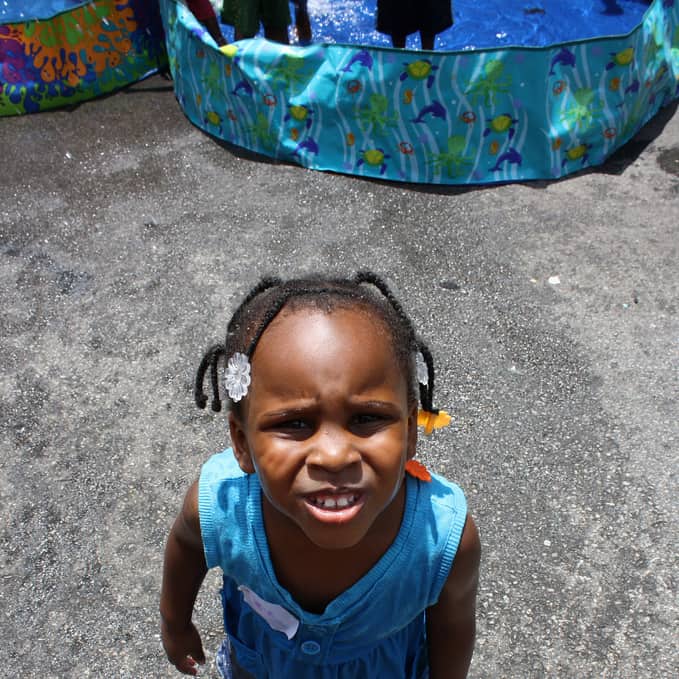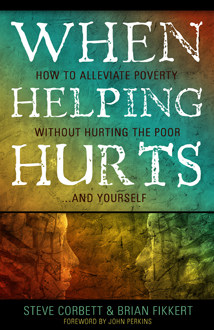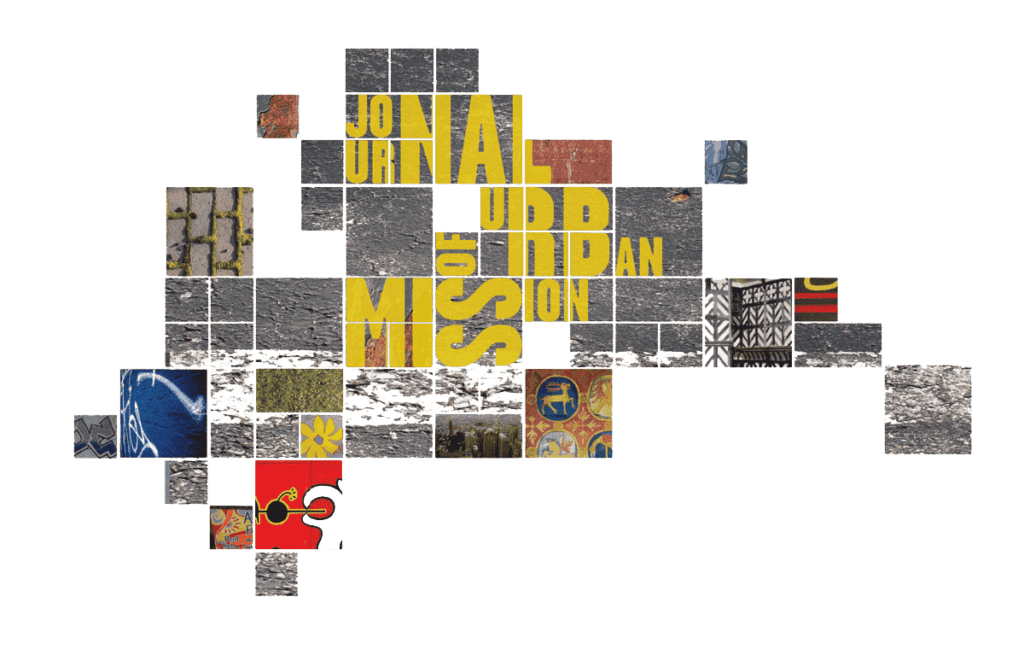Most well-to-do North American Christians have a misunderstanding of poverty, as well as of themselves in relation to the poor, and therefore apply misguided solutions that end up hurting rather than helping already desperate situations, in spite of their good intentions. Here is a book that seeks to help the church, especially the well-to-do North American church, gain a better understanding of poverty that will lead to better practices of mercy ministry.
- Title: When Helping Hurts: How to Alleviate Poverty Without Hurting the Poor and Yourself
- Authors: Steve Corbett and Brian Fikkert
- Publisher: Chicago: Moody Publishers, 2009
- Pages: 230
When Helping Hurts is a unique book meant to be used by groups or individuals in preparation for short-term or long-term mission work in Western, primarily inner city, areas of poverty or the Majority World (Africa, Asia, and Latin America). It is laid out in three parts with three chapters per part. Each chapter begins with “Initial Thoughts” (questions to prepare readers for the chapter to come) and ends with “Reflection Questions and Exercises” (questions and activities to assist the readers to more deeply work through the issues in that chapter). I believe this format will be especially helpful for groups studying together before going on a short-term or long-term mission trip.
I found the first two parts to be especially helpful as they laid out a framework from which readers could assess their own endeavors. The first part begins with a theological discussion framed within the historical redemptive story of creation, fall, and redemption. Throughout the book the readers are reminded that their goal is to be vehicles used by God to bring a measure of redemption in the four major relationships–with God, with self, with others, and with creation. I believe it is quite easy to get very involved in one or another of these areas and not remember that all four areas must be considered. This is what happens when evangelism is broken down into Word or deed rather than Word and deed. That is why the authors often remind the readers of the necessity to address this four-way quest for shalom through relational healing.
Another important facet of this relational healing is the importance of the local church. The authors make it clear that they are not opposed to parachurch assistance in the process of addressing poverty around the world; however, to be effective for the kingdom, these efforts must be in partnership with local churches in order to address the fullness of relational shalom. The authors make this clear when they state,
The local church, as an institution, has a key role to play in poverty alleviation, because the gospel has been committed by God to the church. This does not mean that the local church must own, operate, and manage all ministries. Parachurch ministries and individuals have a role to play as well. However, it does mean that we cannot hope for the transformation of people without the involvement of the local church and the verbal proclamation of the gospel that has been entrusted to it.1
Once the theological framework is laid out and the importance of the local church is established, the next focus of Part I is to help the reader understand the nature of poverty. The authors delineate the difference between “poverty” and “material poverty.” They cite a definition of poverty given by Myers, “Poverty is the result of relationships that do not work, that are not just, that are not for life, that are not harmonious or enjoyable. Poverty is the absence of shalom in all its meanings.”2 This definition leaves room for us to understand why the title of the book includes hurting ourselves as well as the poor. Worldview issues of both the poor and ourselves cause the relationship breaks noted by Myers and indicate the necessity of shalom for both sets of parties. The authors state it this way.
One of the biggest problems in many poverty-alleviation efforts is that their design and implementation exacerbates the poverty of being of the economically rich–their god-complexes–and the poverty of being of the economically poor–their feelings of inferiority and shame.3
When we hear the word “poverty,” most of us think of material poverty. That is why it is important that the authors once again remind us throughout the book that we cannot simply go someplace to “fix” the poverty of others. We also need our own poverty fixed. In keeping with this idea, the authors point out how important it is to ask those afflicted by poverty to define that poverty rather than having Western outsiders do it for them. “Poor people typically talk in terms of shame, inferiority, powerlessness, humiliation, fear, hopelessness, depression, social isolation, and voicelessness.”4 They don’t necessarily talk about the lack of material things. This is important because aid givers often deal with the material and not the psychological and social ramifications of poverty, so they are not really bringing shalom to the situation. Since the poverty Myers spoke about is rooted in broken relationships, we need the power of Christ’s resurrection to redeem those relationships.
When we hear the word “poverty,” most of us think of material poverty. That is why it is important that the authors once again remind us throughout the book that we cannot simply go someplace to “fix” the poverty of others. We also need our own poverty fixed.
Understanding the nature of poverty leads us to understanding effective poverty alleviation efforts. We will look at two more definitions before moving to Part 2 of the book. “Poverty alleviation is the ministry of reconciliation: moving people closer to glorifying God by living in right relationship with God, with self, with others, and with the rest of creation,” while “material poverty alleviation is working to redeem the four foundational relationships so that people can fulfill their callings of glorifying God by working and supporting themselves and their families with the fruit of that work.”5 This leads us to Part 2 which lays out the general principles for poverty alleviation that does not hurt either the poor or ourselves.
Part 2 begins with a wonderful diagram showing where in the greater scheme of poverty alleviation our efforts should be–on relief, rehabilitation, or development. As we have just witnessed with the earthquakes that devastated Haiti, there are times and circumstances that necessitate relief efforts. People are dying, all major support systems are destroyed or at least damaged, there is truly almost nothing people can do for themselves at this stage, so they need a great deal of relief. Now that the initial crisis is over, efforts should be on rehabilitation–rebuilding the systems that will allow for the people of Haiti to get back to some semblance of normalcy. Finally development comes into play. Development allows the people to slowly improve their situation and concentrates on the healing of the four broken relationships. Here we are beginning to understand how our efforts can hurt the poor and then ourselves. We often make mistakes in diagnosing where a particular area or a particular people are on the continuum of relief, rehabilitation, and development. If we keep people in relief mode too long, they will become dependent and may never break out of the cycle of looking to others for their provision. If we move into development too quickly without establishing firm local support systems, the poverty alleviation efforts may fail as we have “proven” once again that the people are inferior and cannot provide for themselves.
Local people must be involved in every area of designing, implementing, and evaluating the poverty alleviation efforts. This brings a measure of power to the powerless, hope to the hopeless, and participation to the isolated. Paternalistic tendencies of the relief giver can be disastrous for the future development of a people and alleviation of their poverty.
The book then focuses on something that I have learned is very important–to use an asset-based approach to poverty alleviation rather than a needs-based approach. If we believe that we are all made in God’s image, then we must allow for the fact that God gave gifts to each of us. These gifts may be very well hidden in the poor or pushed down through systemic forces, but we must rely on God’s wisdom for discerning what those gifts are, what assets the poor have to bring to the table. Then, by utilizing the poor themselves, a plan for development can be made that incorporates those assets from the very beginning. Local people must be involved in every area of designing, implementing, and evaluating the poverty alleviation efforts. This brings a measure of power to the powerless, hope to the hopeless, and participation to the isolated. Paternalistic tendencies of the relief giver can be disastrous for the future development of a people and alleviation of their poverty. The authors point out that participation in itself is a legitimate end, not just a means to an end.
I found Part 3 to be the weakest section of the book. Although there are many good points, including dealing with cross-cultural worldview issues–issues that are just different ways of doing things rather than a right or wrong way–there are a number of models that are exegeted for the readers that give me pause. I believe there needs to be a much clearer warning regarding cloning models. For example, on pages 191-194 the authors talk about “Job Preparedness Ministries” utilizing an example from Memphis, Tennessee. A group of churches in Philadelphia in the early 2000s heard of such a ministry called Jobs Partnership which exactly utilizes the precepts of the Memphis example. Unfortunately, Philadelphia was developed with a manufacturing-based economy which had been hemorrhaging jobs for a couple decades prior to this effort. Although the participating businesses were well meaning, the economy of that city did not allow them to offer the jobs they had hoped to use for the “graduates” of the program. Therefore, the participants graduated, still could not get a job, and were angry and once more shown that they were failures. This is a good example of when helping hurts. Therefore, I would definitely include a strong warning not to clone but rather to use principles to develop contextually relevant and helpful programs or processes.
Another issue that was not addressed, but may have been beyond the scope of this book, is that of systemic transformation. Throughout the book systemic issues were mentioned, but in the overall plan of transforming communities through right relationships, there was no mention of how to address the systemic issues that oppress and marginalize the poor. At the very least this should have been mentioned as something which needed to be addressed, possibly with a future work.
Finally, whereas I understand and appreciate the necessity for reminding people throughout the book of some of the foundational issues, there was too much of a sense of, “I know I’ve read that before.” I found this to be very distracting, although I was reading the book straight through and this effect may be minimized if done as a weekly study guide.
Overall, I was very pleased that such a book has been written. I entered U.S. inner-city, cross-cultural ministries in the early 1960s with no training and no understanding of these concepts. I was actually in ministry for 15 years before the Lord started teaching me these truths, and I have often agonized over the harm I caused when all I wanted to do was help. My heart now resonates with the principles taught in this book, and I believe it can be a wonderful asset to all those embarking on short-term or long-term mission trips, whether elsewhere in the U.S. or overseas.
Notes
1 Page 81, emphasis in the original.
2 Bryant L. Myers, Walking with the Poor: Principles and Practices of Transformational Development (Maryknoll, N.Y.: Orbis Books, 1999), 86, cited on page 62.
3 Page 65, emphasis in the original.
4 Page 53.
5 Page 78.



